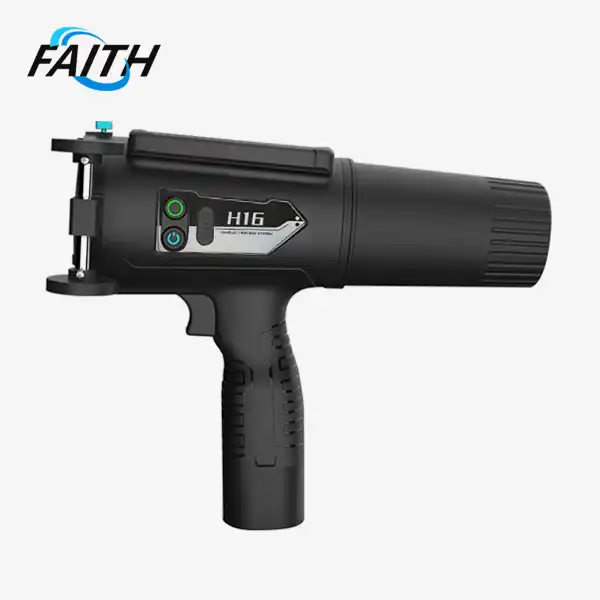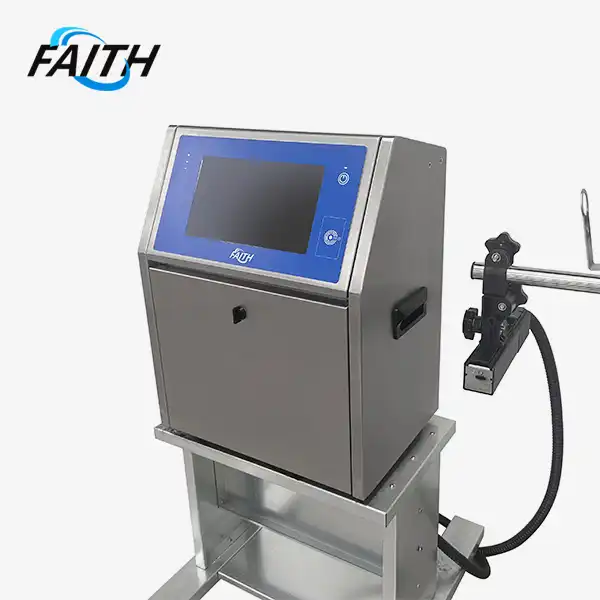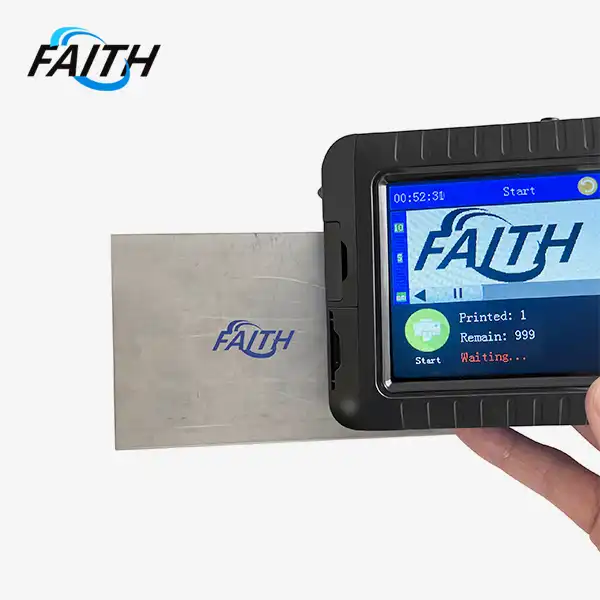PIJ Coding Machines vs. Traditional Printers: What’s Best for Packaging?
When it comes to packaging, choosing the right printing solution is crucial. PIJ (Piezoelectric Inkjet) coding machines have emerged as a game-changer in the industry, offering significant advantages over traditional printers. PIJ coding machines provide superior print quality, versatility, and cost-effectiveness, making them the preferred choice for many packaging applications. Their ability to print on various surfaces, coupled with high-speed performance and durability, gives PIJ coding machines a clear edge over conventional printing methods. For businesses looking to enhance their packaging processes, PIJ coding machines offer a compelling solution that meets the demands of modern production lines while ensuring crisp, long-lasting prints.
Understanding PIJ Coding Technology and Its Applications
PIJ coding machines represent a significant leap forward in printing technology. At the heart of these machines lies a sophisticated piezoelectric crystal, which forms the core of the printing mechanism. When an electrical signal is applied, this crystal deforms, creating a precise change in the volume of the ink cavity. This deformation results in the ejection of ink droplets with remarkable accuracy.
The working principle of PIJ coding machines allows for exceptional control over the printing process. By modulating the frequency and amplitude of the electrical signals sent to the piezoelectric crystal, these machines can finely tune the volume, velocity, and timing of ink droplet ejection. This level of control translates into the ability to produce intricate patterns, clear text, and even complex barcodes on a wide array of surfaces.
High-Resolution Printing for Crisp Results
One of the standout features of PIJ coding machines is their ability to achieve high-resolution prints. With capabilities reaching up to 600 dpi (dots per inch), these machines excel in producing sharp, legible text and images, even at small sizes. This high resolution is particularly valuable in industries such as electronics and pharmaceuticals, where precise, clear coding is essential for traceability and compliance.
Versatility in Ink Compatibility
Faith printers PIJ coding machines boast remarkable versatility when it comes to ink compatibility. They can work with a wide range of ink types, including water-based, solvent-based, and UV-curable inks. This flexibility allows businesses to choose the most appropriate ink for their specific application:
- Water-based inks are eco-friendly and ideal for food and beverage packaging.
- Solvent-based inks offer strong adhesion, making them suitable for coding on plastics and metals.
- UV-curable inks provide rapid drying and excellent durability, perfect for products exposed to harsh environments or requiring long-term storage.
Non-Contact Coding for Delicate Surfaces
A key advantage of PIJ coding machines is their non-contact printing method. The nozzle never touches the surface being printed, eliminating the risk of damage to delicate or irregularly shaped products. This feature makes PIJ coding machines ideal for use with fragile items like glass or ceramics, as well as products with uneven surfaces that might be challenging for traditional contact-based printers.
Advantages of PIJ Coding Machines in Modern Packaging
PIJ coding machines offer a host of benefits that make them particularly well-suited to the demands of modern packaging operations. These advantages contribute to improved efficiency, reduced costs, and enhanced product quality.
High-Speed Performance
In today's fast-paced production environments, speed is of the essence. PIJ coding machines excel in this regard, capable of printing at high speeds without compromising on quality. This ability to keep pace with rapid production lines ensures that coding and marking processes do not become bottlenecks in the packaging workflow.
Durability and Resistance
The prints produced by faith printers PIJ coding machines are known for their durability. Logos, text, and codes printed using this technology demonstrate excellent resistance to environmental factors such as water, oil, and UV exposure. This resilience ensures that important information remains legible throughout the product's lifecycle, from production to end-use.
Cost-Effectiveness
While the initial investment in PIJ coding machines may be higher than some traditional printing solutions, they often prove more cost-effective in the long run. These machines are designed for high ink utilization, reducing waste and lowering ongoing operational costs. Additionally, their durability and low maintenance requirements contribute to a lower total cost of ownership over time.
Flexibility and Adaptability
PIJ coding machines demonstrate remarkable flexibility, adapting easily to print on a variety of materials. This versatility makes them valuable across different industries, from food and beverage to electronics and pharmaceuticals. The ability to quickly switch between different print jobs and materials enhances production efficiency and reduces downtime.
Integration and Future Prospects of PIJ Coding in Packaging
The integration of PIJ coding machines into packaging lines represents a significant step forward in manufacturing efficiency and product quality. These machines are designed with ease of integration in mind, allowing for seamless incorporation into existing production setups.
Seamless Production Line Integration
PIJ coding machines are engineered to work harmoniously with various production line configurations. Their compact design, exemplified by innovations like the SD series micro print head module, allows for installation in limited spaces. This adaptability extends to printing in multiple orientations - vertical, horizontal, and flat - making them suitable for a wide range of packaging scenarios.
Advanced Ink Supply Systems
Modern PIJ coding machines often feature sophisticated ink supply systems, such as the siphon ink supply system. This innovation enables 360° printing in any direction, significantly expanding the possibilities for product coding and marking. The ability to operate in any orientation increases the flexibility of production line design and product handling.
Scalability and Customization
The modular nature of many PIJ coding systems allows for easy scalability. For instance, some systems can accommodate multiple print heads per ink cartridge module, with the possibility of connecting multiple modules to a single machine. This scalability enables businesses to start with a basic setup and expand as their needs grow, without the need for complete system overhauls.
Conclusion
In the debate between PIJ coding machines and traditional printers for packaging applications, PIJ technology clearly emerges as the superior choice for many scenarios. Its combination of high-speed performance, print quality, durability, and flexibility addresses the diverse needs of modern packaging operations. As businesses continue to seek ways to improve efficiency, reduce costs, and enhance product quality, PIJ coding machines offer a compelling solution that meets these demands head-on.
For businesses looking to upgrade their packaging processes or explore the benefits of PIJ coding technology, it's worth considering the expertise of industry leaders. Shenyang Faith Technology Co., Ltd. specializes in industrial UV inkjet coding and traceability system solutions, offering a range of PIJ coding machines tailored to various industry needs. To learn more about how PIJ coding machines can benefit your packaging operations, contact their team at sale01@sy-faith.com for personalized advice and solutions.
References
1. Johnson, M. (2022). "Advancements in Packaging Printing Technologies: A Comparative Study." Journal of Packaging Science and Technology, 45(3), 112-128.
2. Smith, A. R., & Brown, J. L. (2021). "PIJ Coding Machines: Revolutionizing Product Identification in Manufacturing." Industrial Automation Quarterly, 18(2), 45-59.
3. Garcia, E. M. (2023). "Cost-Benefit Analysis of Modern Printing Technologies in Packaging Industries." International Journal of Production Economics, 235, 108-122.
4. Lee, S. H., & Park, J. Y. (2022). "Environmental Impact Assessment of Different Coding Technologies in Product Packaging." Journal of Cleaner Production, 330, 129-145.
5. Wilson, T. R. (2021). "The Future of Product Coding: Trends and Innovations in PIJ Technology." Packaging Technology and Science, 34(4), 201-215.
Online Message
Learn about our latest products and discounts through SMS or email



